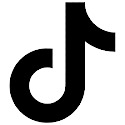Revision Rhinoplasty- Nose Surgery Beverly Hills
Unsatisfied with the results from your primary rhinoplasty? You’re not alone. 5-12% of all nose job patients seek a revision rhinoplasty. The unflattering new shape can either be the result of an inexperienced surgeon or the way your body heals.
Dr. Tarick Smiley is a board-certified plastic surgeon in Los Angeles and Beverly Hills, California. He is also an active member of the Plastic Surgery Foundation for which he has received 1st place awards for his publications and presentations.
Even the most experienced and specialized surgeons cannot control poor healing, so it is important to visit your primary rhinoplasty surgeon to hear his or her analysis before visiting other qualified surgeons for a second opinion. This way you can speak intelligently about your procedure to Dr. Smiley, to help ensure that you will receive desirable results after your secondary rhinoplasty.
A revision rhinoplasty can correct an “over-operated” nose to return it to a more natural looking state, correct breathing problems and/or correct concerns that were not addressed during your primary nose surgery.
The most common reasons for revision rhinoplasty include:
- Short Nose Deformity (Overturned Nose)
- Tip Bussae (Boxy Tip)
- Saddle Nose Deformity
- Asymmetric Nostrils
- Pinched Tip
- Twisted Nose (Crooked Nose)
- Large Nose
- Nasal Hump
It is important to select a qualified surgeon to perform any type of surgical procedure; however, when it comes to a revision surgery it is even more important to do your research. Be sure that you are selecting a board certified surgeon who is highly specialized in rhinoplasty and revision rhinoplasty procedures.
Although you can still achieve a beautiful nose after multiple surgeries, you are more likely to achieve your desired result with fewer procedures. This is because scar tissue forms each time you undergo a nose job. The more surgeries, the more scar tissue and the more complicated your surgery becomes.
- Describe your training and experience with rhinoplasty & revision rhinoplasty surgery.
- How many revision surgeries have you performed?
- What is the most complicated revision surgery you have performed?
- What exactly will have to be done to correct my concerns?
- Are my expectations realistic?
- What are the chances of needing another revision surgery?
- What can I do to ensure optimal results?
- Will my surgery be performed in a fully accredited facility?
- What are the credentials of your medical staff?
(Choose a facility with board certified anesthesiologists & registered nurses for maximum safety.)
FAQ
About Revision Rhinoplasty
Secondary rhinoplasty procedures (or additional revision nose jobs) are more complicated than a primary nose surgery. After a close examination of your nasal structure, Dr. Smiley will be able to determine the best course of action to correct your concerns. Because not all complications can be seen from an examination, is very important to tell Dr. Smiley as much information as possible and provide medical records prior to your procedure to give him a better understanding of your nasal structure.
Cost of Revision Rhinoplasty
Because rhinoplasty procedures are highly individualized and present problems that cannot be seen by the untrained eye, we cannot quote a price for a revision rhinoplasty online or over the phone. To determine the price of your revision nose job, please schedule a complimentary consultation with Dr. Smiley. After your examination, analysis and discussion of your goals, Dr. Smiley will then be able to provide you with a price for your surgery. Our prices are highly competitive and include OR fees, anesthesia fees and doctor’s fees. There is no charge for follow up visits. The only additional fee that will be assessed is the standard $150 for pre-operative lab work.
Are Revision Rhinoplasty Procedures Performed Using an Open or Closed Technique?
Highly specialized nose surgeons are able to perform the closed technique for most rhinoplasty and revision rhinoplasty cases. However, in some instances an open technique is necessary to achieve the desired result. This technique is most common for revisions to the tip of the nose, but can be necessary to correct other problems as well. Dr. Smiley will discuss which type of procedure is best suited for your individual needs. It may be necessary to perform an open rhinoplasty after the surgery begins, if the nasal structure presents unforeseen complications. Dr. Smiley will discuss this possibility with you in greater detail at your consultation.
- Open Rhinoplasty – incisions are made across the tissue between the nostrils.
- Closed Rhinoplasty – incisions are made through the nostrils, leaving no visible scars.

